Usually before July 11, they ask me to cut down the grass around the Memorial. I feel like I’m the only one who survived. Crossed through the mountains. Here. We used to play soccer here. … The first time I returned home, I saw something is different over here. Frames of cars and the body of a truck, a bus. A dump, you would say. But another thing is that it used to be flat. And now it was disturbed.
–Mirza Alic, Srebrenica, Bosnia
Mirza Alic is one of three protagonists that appear along with Srecko Ilic and Mejra Cakanovic in Kumjana Novakova and Guillermo Carreras-Candi’s feature film, Disturbed Earth (2021). It is important to know and remember their names for they survived one of the worst horrors of the late 20th century. They belong to only a handful of people left that were present in Srebrenica where, in July 1995, over 8,000 men, women and children were abruptly told to pack some things by soldiers and leave their homes “for their own safety”. They were driven over the mountains in crowded buses and trucks, and transported to what would be a killing field, their bodies buried in mass graves in the forest. This well-orchestrated genocide – under the auspices of a military operation led by the “Butcher of Bosnia”, Ratko Mladic – was meticulously directed and documented on film by its perpetrators and occurred in a time period of less than 14 days.
Kumjana and Guillermo have created films together for close to a decade, as well as implementing media literacy and filmmaking education programs in the Balkan region for emerging makers. Both also have an obsession with the country of Bosnia but spent many years pointedly avoiding the haunted grounds of Srebrenica. Kumjana was born in ex-Yugoslavian Macedonia. Guillermo is Catalan from the east of Spain. At first glance, an unlikely pair to team together, but upon their meeting at Kumjana’s film festival in Sarajevo called Pravo Ljudski, which she co-founded in 2006, they had an instantaneous rapport. In 2009, Guillermo was invited there to exhibit his first film, Tragovi, his graduation project. He shot the film all over Bosnia (except for Srebrenica), focusing on the young people there. A deep and abiding friendship was formed and after Guillermo returned to Spain, they immediately started making plans to work together.
After implementing several programs in the region, in 2015, the two brought a traveling cinema program to Bosnia, which included outdoor 35mm projections of such unlikely films as Charlie Chaplin’s The Circus (1928). They moved around by van through many smaller villages, including Srebrenica, a place that was, they realized, already deeply embedded inside them, and despite much trepidation and a false start, they knew they had to try to tell this story.
In mid-March, the three of us convened via Zoom, Kumjana, from her home in Skopje, Guillermo, in transit, calling in from Paris. He would be on his way the following day to Copenhagen for CPH:DOX where Disturbed Earth was playing as part of a beautifully-curated 12-film strand called Artists & Auteurs.
Pamela Cohn (PC): Let’s begin with this profound friendship that has allowed for a years-long artistic partnership. Guillermo, you mentioned to me that making Disturbed Earth is the culmination of that history together. What’s at the heart of this commitment to each other?
Guillermo Carreras-Candi (GCC): I can’t really recall a specific moment when we decided to make films together. But after meeting in Sarajevo in 2009 at Kumjana’s festival, we had our first deep conversations about cinema and started to get to know one another. Over the years, we talked about the things we wanted to do, which made a sort of triangle of priorities: make films; do lots of work in Bosnia, a place we were both obsessed by; and to provide arts education programs for young filmmakers in the Balkan region.
Kumjana Novakova (KN): What’s crucial in all this for me is in the word you used, Pamela – the commitment we have to this partnership. Disturbed Earth, as well as the projects we have behind us, rests on that commitment. Even though we initially connected in a professional environment, it was the friendship that grew this deep mutual trust. It wasn’t the decision to make a film together that brought us closer; the films we’ve done together are the result of our close relationship, especially in the case of this film.
We all know how difficult it is to work together with someone or a group of people on a film, especially one that takes such a long time to make. Oftentimes, these relationships break under various pressures – production, financing, the creative vision, and so on. With the kind of trust Guillermo and I have built, it makes it possible to overcome these kinds of tensions. I believe that cinema absolutely does come out of anxiety, out of struggle, out of challenges. It’s amazing to be working with someone you feel is taking care of you. Then comes the complexity of the space and the subject itself, which added an additional layer of trauma, since what we’re embarking on is this cinema of trauma. I don’t know if it’s even possible to work in a space and on a subject like that if you feel alone.
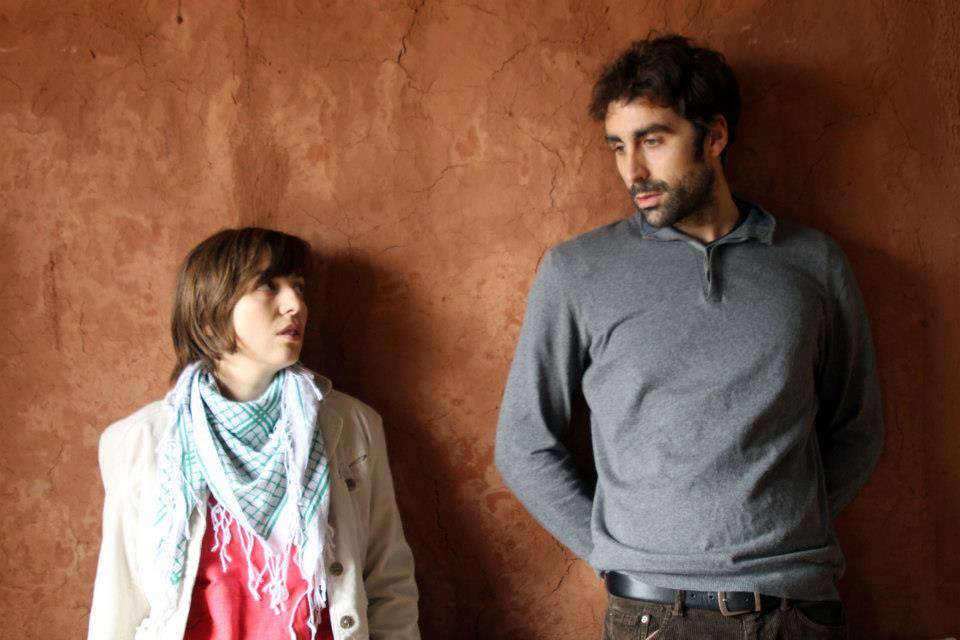
PC: Did the decision to also take on executive producer responsibilities come from a bid to protect this little bubble in which to work, ensuring the safety you needed to proceed? Or was it just the typical ravages of trying to find proper support in the region, particularly for this kind of very deliberate and delicate archeological and observational approach?
KN: I think it’s a very complex combination, the factors that stand behind this decision. The country of Bosnia has a very specific cinema landscape. It’s a small country facing various challenges and the ways and means of acquiring access to produce a film project are not enormous. You can either go huge or stay on a micro level. Obviously, for us, we were micro and not just because of the type of cinema we make. We would not have been able to make Disturbed Earth in any kind of way if we expanded this micro approach.
However, the way the community works in Srebrenica and the surrounding areas is what really defined and dictated our production strategy. I think we would all agree that the cinematic space defines approach and strategy, both in creative and production terms. For us, this was crucial. No matter who we had around us professionally, it would still be just us going inside the space and organizing things because that’s the way the space works, even for the simplest things. “You will come, and we can do this,” is always the response. It’s a space that’s small and closed – not closed in terms of accessibility, but a space where life is happening on that ground. We did have a lot of local support, but that support was very non-traditional in terms of film roles. Local fixers would be our guides, not someone coming from the outside. In the end, the film is a product of this community.
GCC: We did initially start with some bigger ambitions in terms of budget and international co-productions, and so on. We knew there was potential there, so it was worth exploring those options. In the end, we discovered that we weren’t going to be able to make the film we wanted to make. We kept the support of the Catalan television; it’s a co-production between Bosnia and Spain. We did give up for some months in the beginning, thinking it wasn’t going to be possible to make it. A few months later, we agreed we had to do it, but it would be done essentially with just me and Kumjana in the field taking as long as we needed to take.
PC: In terms of the historicity of the film itself, Kumjana writes in one of her profoundly moving texts that appear throughout the film, a phrase that reads in part: “…futures that are unbearably historical,” and I’ve been thinking a lot about those words and what they might mean in the context of Srebrenica. Guillermo, as the main cinematographer who wants to frame things as meaningfully as possible, what were the challenges in capturing those ineffable ideas steeped in the landscape within the set point of a camera frame?
GCC: We both can really feel a place – what its past has involved and what’s happening in its present. For me, it’s completely about how I am understanding things through the emotions of Srebrenica and what happened there. That’s where the history lies for me. When I’m shooting, I’m not approaching things intellectually at that stage. For me, the moment I decide to frame something, all the intellectual and emotional processes I’ve been through help me to know that it is the right place, the right time, the right position to take, and I have come to trust those instincts. It’s a very complex process to get to that point even though it sounds quite simplistic.
The last shoot was in December of 2019, a few months before the Covid pandemic shut everything down. Ironically, even though we had been shooting for such a long time, I told Kumjana then that I felt I could continue filming for even longer because I had finally come to know the how and why of it all. It was so frustrating that we had to stop! I really knew where I had to be to film in this space and it took all that time to get to that point.
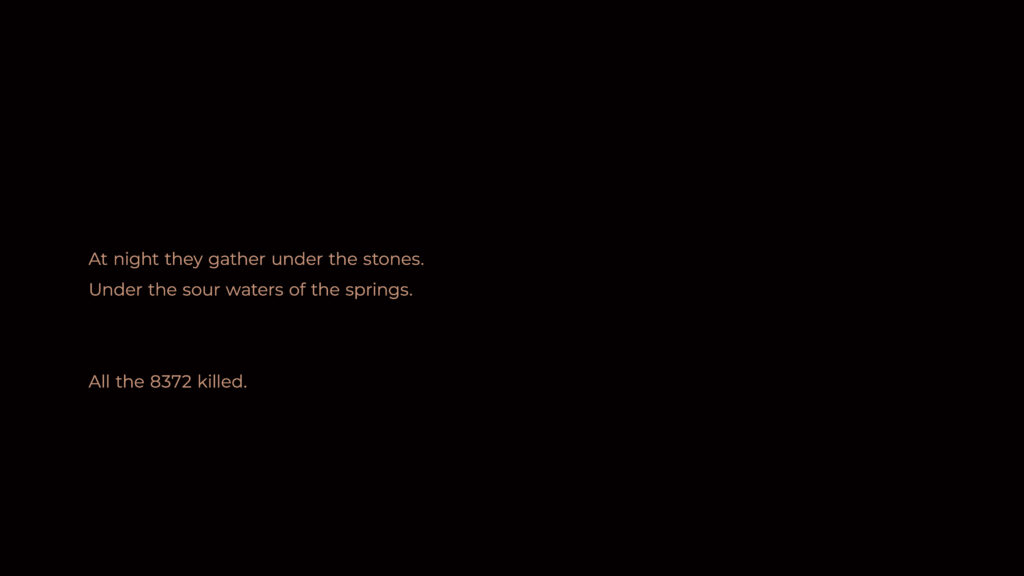
PC: Do you feel like the individuals you filmed with who witnessed and survived the massacres understood that you had deeply ingested all these ideas, that you had done all that complex, internal work?
KN: As a documentary filmmaker, or any kind of filmmaker really, one must remain open to the many different ways of communicating and sharing. When you ask this essential question about Srecko, Mirza and Mejra’s understanding of things, I would say absolutely yes, they did understand – but on an emotional and intuitive level. Working in spaces like this as filmmakers, we must develop new language skills. We must be ready to exchange on a non-verbal, non-intellectual level. To go back to what Guillermo was saying, at one point, it started working, both in the way of figuring out how to film and the visual language. We were the ones that came; we were the ones that were the intruders. That’s why we needed so much time to start sharing with them in a way that would bring us all together in that space.
I remember the enormous frustration at the beginning, the impossibility of finding that right visual language, the impossibility to frame in order to feel you’re in the right space, in the right proximity or distance. But slowly, and by not filming for a long time, just being with the space, being with the protagonists, we took the time to learn, and that was the only way it became clear how to film. There’s this pressure to always be able to articulate a clear verbal and intellectual idea, but that’s just one approach among many.
The Balkan region is extremely complex; we could discuss this for days. But by creating these different entry points and temporalities in the film, we tried to illustrate the feeling of all the various tensions that we live with every day here in this region. History is part of both the present and the future in the Balkans. It’s like that in many other places, of course, but here, the reminders of the wars are so present still. We have many pasts and the ways those pasts are defining the present, as well as the future, is overwhelming and very hard to encapsulate. Certain social groups and segments of society operate exclusively based on different pasts, essentially meaning different nationalisms. We would have been dishonest if we didn’t try to challenge these tensions and relationships. The present does not exist without the past in Srebrenica. But we learned to translate what is already there and live with the anxiety, the tension, the frustration in a way that allowed for new solutions and ways of seeing.
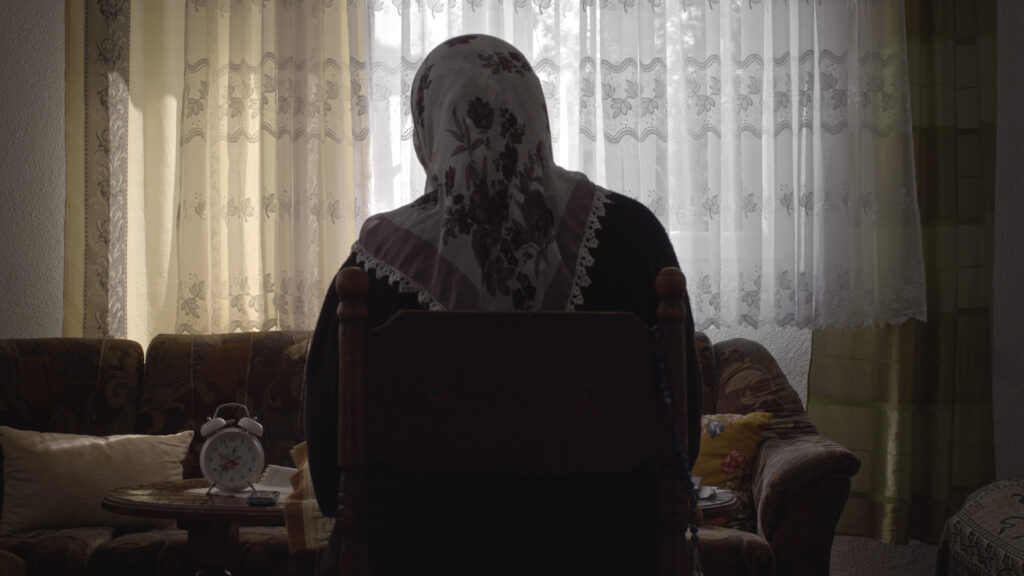
PC: This other wind, if you will, blows into the narrative in the pieces of archival you chose to include that are juxtaposed with your footage. When I interviewed Serbian filmmaker Mila Turajlic about her film, The Other Side of Everything [2017], we also talked about her own work in the archives and the very precise ways she selected the archival segments for that film. She said that using archival footage and photography, particularly from the Balkan region, and particularly juxtaposed in specific ways, can be quite manipulative, a bit dangerous; I think she even used the word pornographic.
KN: I agree with Mila in that I think, in general, when we use archive, we enter a risky field. However, we simply cannot just give up the use of archive because of its potential pitfalls. We were, of course, aware of all the potential dangers. But if we hadn’t tried, it would be too simplistic of a portrait about the space we were trying to reflect upon. That’s precisely why we only used archive that is forensic, meaning archive that has been used in the courts and judicial processes in dealing with the crimes in Srebrenica, approved by many forensic specialists, and that come from the documentary style of image-making. Each clip comes from an observer in a certain framework. Some of the pieces are very well-known and have been discussed within many contexts.
The context that we faced was this forensic footage coming from the tribunal in The Hague that has been used to specifically address all the war crimes, as well as the genocide itself. This is a space that cannot be challenged, the goal of which was to bring this kind of transitional justice to the forefront so that reconciliation can begin. This is also where we concretely see the disturbed earth. When you are in the field, you have those images of the past all the time, coming and going in your mind. This is what we tried to illustrate in the edit. The archive is not merely working as a traditional historic plateau from which to view certain events.
GCC: Also, these pieces of archive we use are exhibited in the Srebrenica Memorial Center. Those physically present images that are exposed at that memorial are what we use in the film. We don’t attempt to explain concrete things but keep them in the realm of memory as we film live subjects who are still there, a cinematic construction where there isn’t necessarily a direct link in those specific archival images. It’s history and memory colliding, providing glimpses, some of them blurry and indistinct. But I also want to make clear that the initial edit began without those images. They were introduced little by little as we built the narrative.
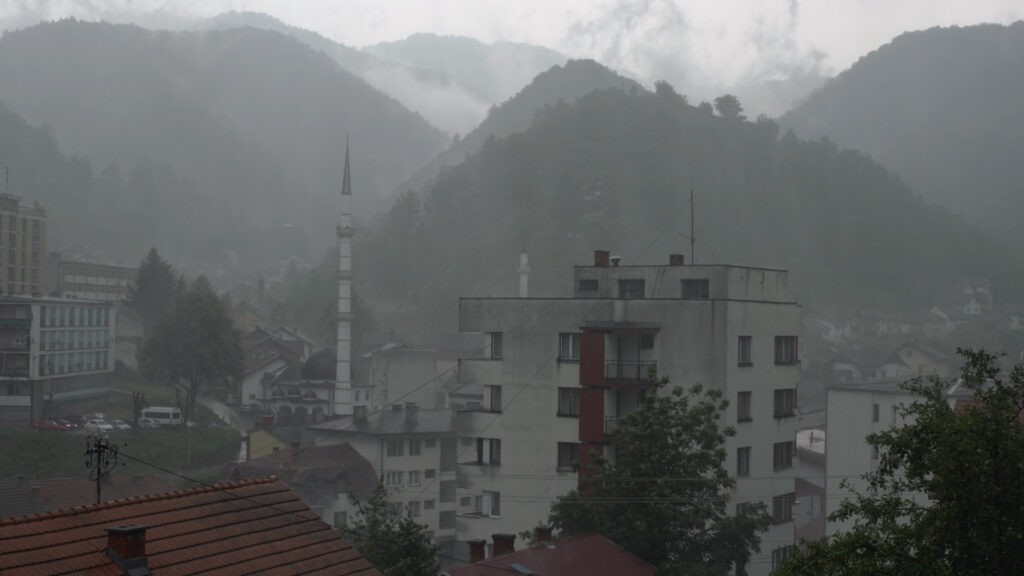
PC: What’s also a very present discussion in Disturbed Earth is the environmental destruction of Srebrenica and its surroundings, a palimsestic layer sandwiched between the buried bodies that have been absorbed into the earth, and what has grown over that earth. These are the segments where I feel you allow the spectator to feel that ground more viscerally.
GCC: The nature, the soil, the animals are elements that unite everything in that space. It’s what unites the past and the present. During Yugoslav times, the city of Srebrenica was a resort, a place with healing waters. And as you said, it’s also where undiscovered bodily remains are still buried. It was part of the discussion between the two of us that we needed to go back and explore what we felt there and translate it further, visually and aurally, in order to include it in our cinematic proposal.
KN: This was actually the very first relationship we were interested in, the first space we wanted to explore. That human-non-human conception of life as opposed to the anthropocentric paradigm is really obvious in spaces of suffering like Srebrenica.
Healing can take place only within the complexity of the earth itself.
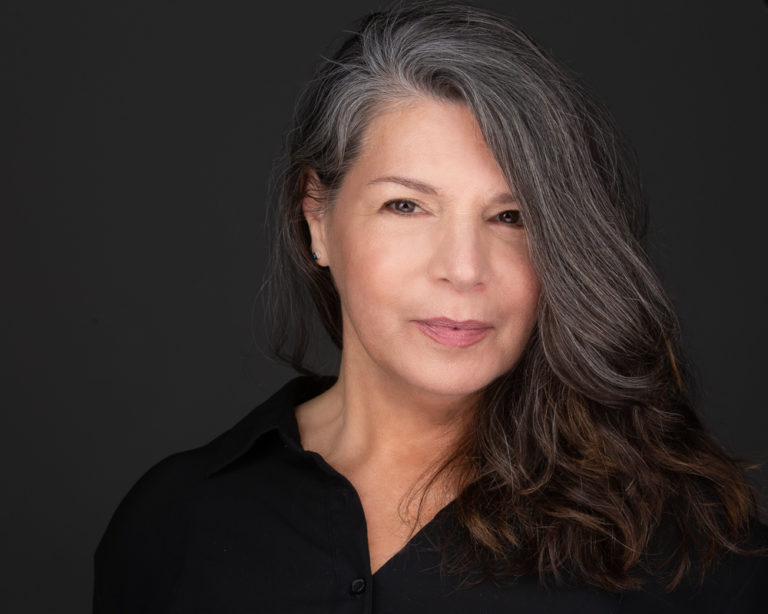
Pamela Cohn is a Berlin-based writer, film & video curator and narrative story consultant. She’s the author of Lucid Dreaming: Conversations with 29 Filmmakers (OR Books, New York & London, 2020), and producer and host of The Lucid Dreaming Podcast: Conversations on Cinema, Art & Moving Image. http://www.pamelacohn.com/
